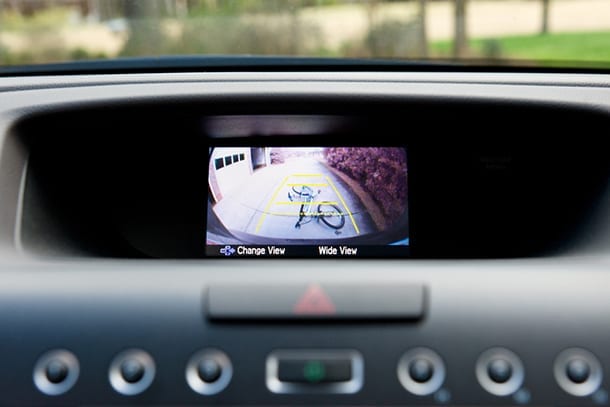
Car safety – Reverse cameras
Reversing. A word that can make even experienced drivers nervous. In fact, I know several friends that scour car parks or side streets for a space that doesn’t require reversing.
Admittedly Australian’s don’t seem to be very good at reversing with a large amount of car insurance claims related to low speed back up incidents. Not to mention the heart wrenching number of children killed or injured in reversing related vehicle collisions every year. In fact a ten year review between 2001 – 2010 conducted by the Australian Department of Infrastructure and Transport identified that 66 children between the ages of 0- 14 years were killed in four-wheeled motor vehicle accidents around the home and a further 483 children were seriously injured. A possible solution to reducing these figures is by making use of reverse camera technology.
A reverse camera works by showing a visual display of the area at the rear of the vehicle on an interior LCD screen. The camera is usually mounted near the rear number plate and is activated only when the vehicle has been put into reverse. The LCD screen displays a mirror image to what is actually captured by the camera to replicate the view the driver would see in the rear view mirror. In order to improve the display at night time, the majority of cameras also have a low lux setting or infra-red night vision. Research has demonstrated that reverse cameras significantly improve the safety of a vehicle by reducing the chance of reversing into obstacles, children or pets. Other benefits such as stress free parking, improved accuracy when hooking up a trailer or caravan, and greater confidence reversing are also recognised.
The popularity of reverse cameras is increasing and many vehicle models now come with the camera fitted as standard. This is not surprising given the large number of vehicles emerging on the market with poor rear visibility. More and more cars are being produced with wider rear pillars for crash protection, smaller rear windshields and streamlined or stylistic profiles that cause blind spots. In testing conditions the blind zones behind some vehicles have noted to be in excess of 10 meters. A reversing camera can reduce this blind zone by up to 90%. Vehicle manufacturers are also aware that buyers are looking for added safety features and with LCD screens becoming cheaper, reverse cameras are being rolled out across even entry level vehicles. For those cars that do not have a reverse camera, one can be retro-fitted for less than the cost of an insurance policy excess and usually within an hour. In making the decision to fit a camera, it is worthwhile considering the reversing visibility rating of the vehicle. This can be found through RACV or NRMA and is a five star rating index considering the visible area at the rear of the vehicle and camera or sensor fittings. Cars with better reversing visibility are awarded more stars with the possibility for a vehicle with a 0 star rating to improve to 5 stars with the installation of a reverse camera.
Reverse cameras can help prevent accidents and injuries however experts warn that they should not replace common sense driving. It is still important to use side and rear view mirrors, perform a shoulder check before backing up and be vigilant with keeping kids safe in the driveways of homes. However if you’re anxious about reversing or have small children at home or in the neighbourhood, the safety and convenience benefits of reverse cameras make them well worth considering for your vehicle.

